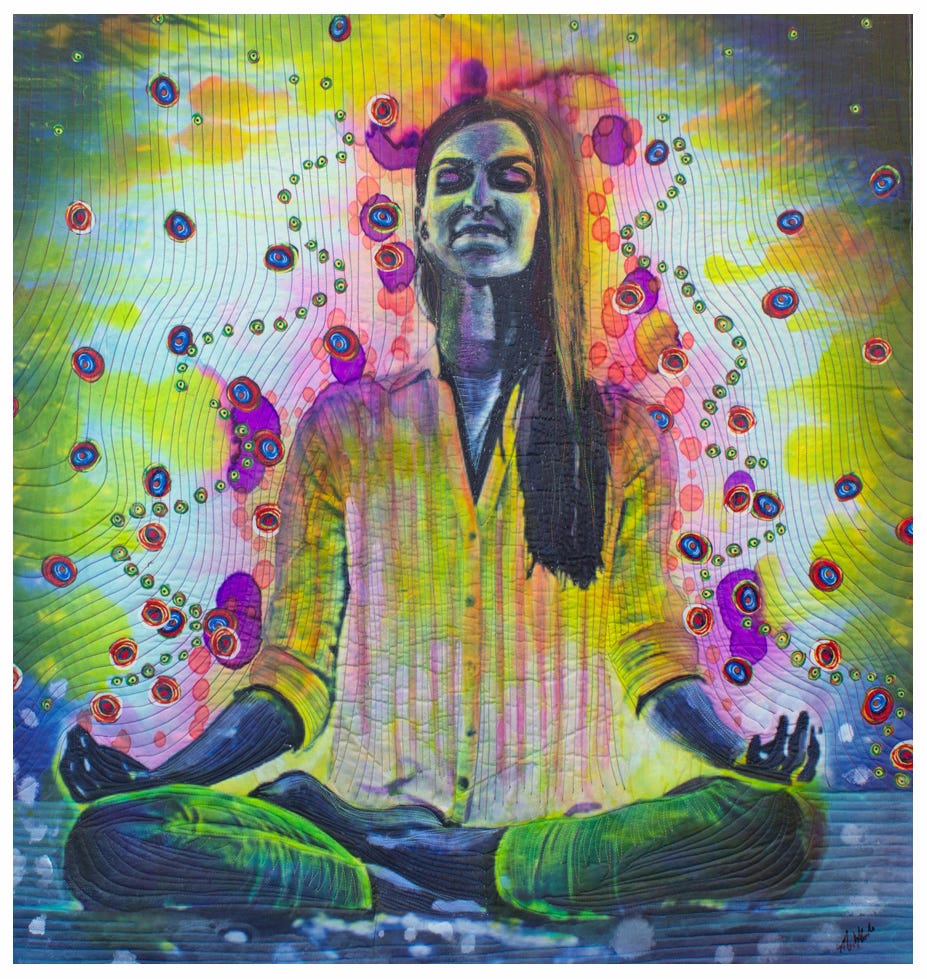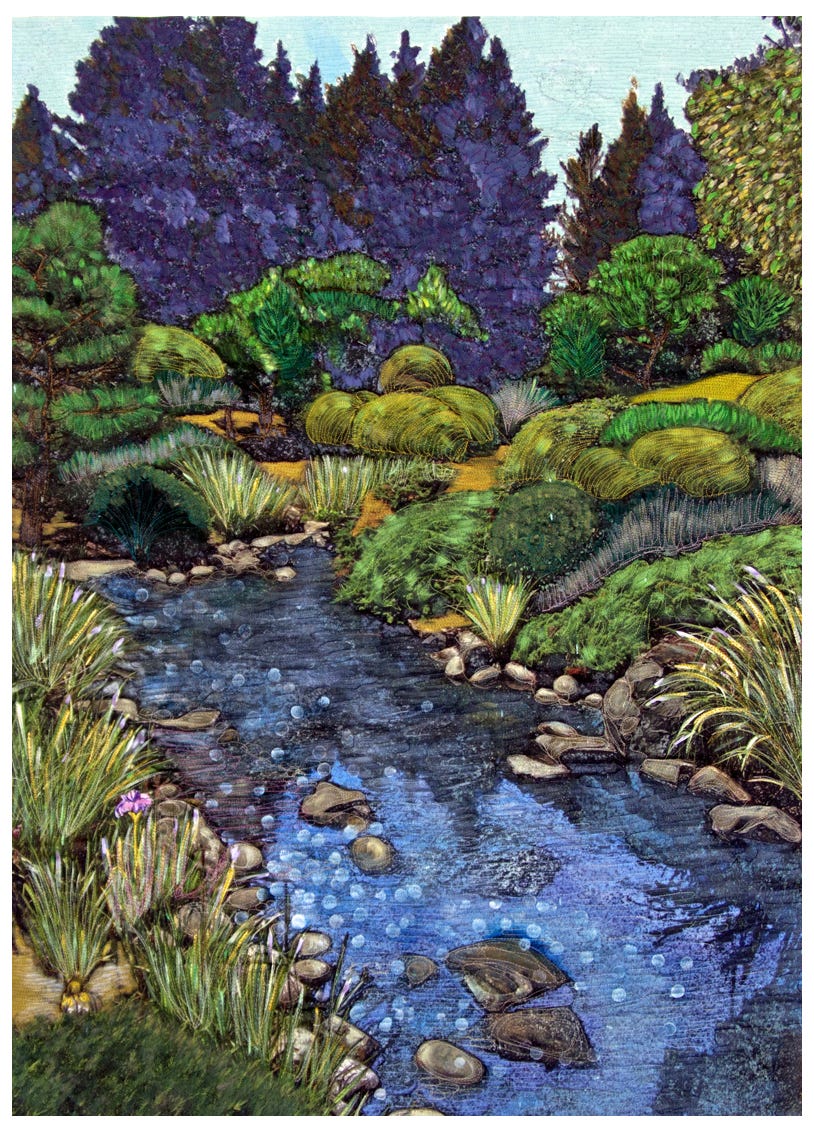What is a series? Is it a single subject? Is it a limited set of colors?
Is it the expansion of an idea?
Definition of Series:
a number of things of a similar kind or related nature coming one after another.
a unified, cohesive body of work that employs the same technique, subject, or palette throughout multiple works
If I was trying to explain the concept of a series to students, an easy example would be artwork identified by a single subject like Monet’s “Haystacks”. An artist like Mondrian who’s signature style of primary colors and intersecting lines would define a series by similar aesthetic decisions, is another clear example.
Examples of the Haystack Series, Claude Monet 1890-1891
The question I raise in this post is whether working in a series can be a trap? I think this is especially true if a series is extremely successful and an artist doesn’t want to disrupt that success. While reading about this subject I frequently found commentary like this one from the Milan Art Institute on sites geared toward understanding art sales:
“A series provides visual cohesion, so if your collectors want to hang more than one of your paintings in their living room, they can if those paintings are part of a series. They look like they go together. Because of this, collectors feel motivated to buy more.”
Even in my local art guild, I often hear this logic: This one sold so I am going to make a series. This logic of giving “the buyer” what they want is a bedrock of commerce; but for the artist it gives the creative control to an outside source.
This dilemma reminds me of the work of Rudolph Carl Gorman. RC was born in 1931 in Chinle, Arizona on the Navajo Nation in a hogan and raised by his grandmother in the traditional ways of his tribe. He always loved art and credited his teachers for encouraging him as a young student.
He he joined the Navy after high school graduation. When he finished his service he entered college and received a degree in Fine Art from Northern Arizona University. As a talented graduate he won a grant to study art in Mexico City where he was exposed to a vibrant art community which celebrated their native Mexican heritage. He went on to model and study at the San Francisco Art Institute where he developed his mature style.
His first exhibition was in 1963. In the next year a solo exhibition in Taos, New Mexico sold out. Along with being an artist, Gorman added gallery owner to his resume being a partner in the first Native owned gallery in the United States representing 55 artists.
In the early 70’s he began a partnership with the Tamarind Institute in Albuquerque, New Mexico where he created more than 52 lithographs in a four year period which was a major source of income. In 1973 he was the only living artist to be included in the "Masterworks from the Museum of the American Indian" exhibition. It was held at the Metropolitan Museum in New York City with his artwork on the cover of the exhibit's catalog.
RC Gorman passed away after a fall in his home in 2005. He was the first contemporary, openly Gay, Native American, art superstar. A key element of that stardom was his perfect understanding of the series. The figure of a native woman seated in an ethereal covering, drawn in a style unique to the artist with a signature turn of the head became Mr. Gorman's goldmine. Gorman was not faking or mimicking any other artists’style, but didn’t veer far from that successful path.
Gorman as an artist, had the gift and the curse; of n early well deserved success. He stepped out as a member of the Navajo tribe from creating for the expectations of collectors and into an attitude of being an equal to any other in the art world. He didn’t create the predictable images of a chief or a squaw. Instead his figure was devoid of a timestamp. In many ways Gorman cleared a path for contemporary native artists like Juane Quick to See Smith. The cost from my perspective was to build a business around a singular motif.
My experience in art school was to create a cohesive body of work, not a series; as I assembled my portfolio for graduation. There were several components. First was the materials or techniques that I had become proficient using. As a painter had to produce a group of stretched canvases and watercolors. Subject matter was also a consideration. I would have to defend the ideas I was exploring through visual expression. It might be something as direct as an exploration of line or as complex as challenging the patriarchy.
In the last year I have been organizing work into proposals for exhibition. The process reminds me of presenting a portfolio to a graduation committee. I am putting together a group of work which demonstrates mastery of my materials and techniques that centers around a set of ideas. During the process I discovered a series within my completed work that I didn’t know existed.
In 2015 - 2016 I completed several pieces I thought of as my “spiritual” portraits. By 2017 I stopped working on spiritual themes and devoted myself entirely to a series of vintage images, portraits of my daughter, and grandson. Without any deliberate decision to return to spiritual images in 2021 these ideas resurfaced. Maybe it was the time alone during lockdown or possibly I had more to say on the subject.
As I went through my body of work, I began to reassess what could hold together as a series visually or thematically. I found many quilts that when presented as a group were similar in subject and style. Each expressed tranquility. Joy, Release, Namaste, and Zazen created just after I retired in 2015 directly addressed the idea of being tranquil.
In 2019 I started making landscapes in between working on portraits. My landscape of the Denver Botanic Gardens “At Dusk” and “Sky Lanterns” which give the viewer an escape into a beautiful tranquil setting . As I gather this group for exhibition, I selected some of my explorations in digital collage featuring my grandson. I once again found the idea of tranquiltiy and peace appearing as a theme. Both “Shoes and Ships” and “Butterfly Effect” are examples on an ongoing extention into the ideas that I started working with a decade ago.
.
While Monet may have camped in a hay field to capture both the changes of seasons and light, a series doesn’t have to be constricted by subject or location. Just as there are color schemes that I return to time and time again without thinking about, there are states of being that I seek out and want to document.
A series in short is a connection.
A thread that runs through a body of work that can be articulated.
Until Next Time…
Margaret











Thank you for this insightful story - so appreciate you sharing it. I haven't thought much about a "series" maybe it's time to consider that. You're the best!